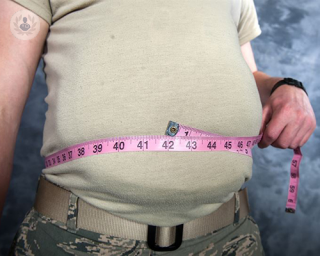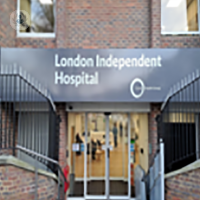Bariatric surgery
Professor Francesco Rubino - Surgery
Created on: 02-03-2014
Updated on: 10-24-2024
Edited by: Carlota Pano
What is bariatric surgery?
Bariatric surgery uses a set of techniques and surgical procedures that help fight obesity and improve a patient's health. It is not to be mistaken as cosmetic surgery and does not come without risk, so the specialist must always advise the patient of the best type of treatment and optimal aftercare.
The procedures available either limit the amount you eat, reduce your body’s ability to absorb nutrients or do both at the same time. You should make permanent lifestyle and diet changes to ensure the long-term success of bariatric surgery.

Why is it done?
Bariatric surgery is done to help you lose weight when diet and exercise haven’t worked or if you are facing serious, life-threatening health problems because of your weight. These health problems include:
- High blood pressure
- Heart disease
- Stroke
- Type 2 diabetes
- Non-alcoholic fatty liver disease
- Sleep apnoea
Reducing your weight will help reduce your risk of developing one or more of these conditions.
Who is a candidate for bariatric surgery?
You would qualify for bariatric surgery if your body mass index (BMI) is between 35 and 40 and you have an obesity-related illness. However, if you have a health problem but your BMI is lower, a doctor may decide that you’ll still benefit from surgery.
Not everyone can undergo surgery though, and you will likely have to meet certain requirements and pass extensive screening tests to see if you qualify. Your doctor will discuss these with you during your consultations.
Types of bariatric surgery
These are the most common types of bariatric surgeries, and each carries its own benefits and risks:
- Gastric band: A band is placed around the top part of your stomach and creates a small pouch. Only a small amount of food will be able to fill this pouch, so you won’t eat as much as before.
- Roux-en-Y gastric bypass: Staples are used to create a small pouch at top of the stomach which connects to your intestine. This allows the food to bypass the lower parts of your stomach, meaning you will only need to eat a small amount of food to feel adequately full, and therefore you will absorb fewer calories.
- Sleeve gastrectomy: A large area of your stomach is removed completely, so you won’t be able to eat as much food as before surgery.
- Intra-gastric balloon: A soft balloon filled with air or saltwater is placed into your stomach using a tube passed down your throat. It is a temporary solution, and is left in for a maximum of six months.
What to expect
Bariatric surgery is done in a hospital under general anaesthetic. The type of incision and weight-loss surgery you will undergo is decided before during consultations with your doctor.
Nowadays, most types of surgery are performed laparoscopically - a minimally invasive technique that uses a small instrument and a camera. The surgeon makes a small incision in the abdomen and uses the camera to operate. This type of surgery avoids the use of large incisions and makes recovery time much quicker.
You should expect the operation to take several hours and upon awakening, medical staff will monitor you in case you present with any complications.
The time you spend in the hospital depends on your individual circumstance, but it is typically a few days before you are discharged.
Complications
As with any surgery, there are risks of complications arising, although they are rare. Some of these can include:
- Infection
- Excessive bleeding
- Blood clots
- Adverse reactions to the anaesthesia
- Breathing problems
The long-term complications of bariatric surgery depend on the type of surgery you undergo. These may include:
- Low blood sugar
- Malnutrition
- Ulcers
- Vomiting
- Acid reflux
- Dumping syndrome
- Hernia
Very rarely, you may require the need for a second surgery to revise complications that occur with the first one.
After bariatric surgery
To allow your stomach to heal, you will usually be asked not to consume any food for a day or two. Following this, you will be asked to stick to a particular diet for the next few weeks, usually starting with liquids, then very soft foods and finally regular food.
Throughout the treatment, you will need to restrict the number of calories you consume from both food and drink and attend frequent medical checkups to monitor your health over the next several months.















